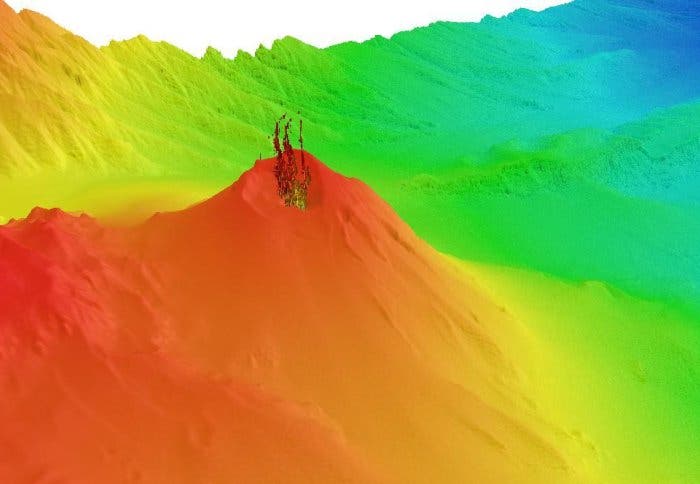A team of British researchers chanced upon something unexpected as they were carrying out a marine survey: an erupting underwater volcano. Their new study helps shed new light on underwater volcanoes, which are notoriously difficult to study.

Aboard the research ship R.R.S. James Cook, scientists from several UK universities, in collaboration with The University of the West Indies Seismic Research Centre, were collecting ocean-bottom seismometers, as part of a larger research project — when they got an alarm message. The culprit was an underwater volcano called ‘Kick ’em Jenny’, one of the Caribbean’s most active volcanoes.
Normally, when you’d hear that a volcano was erupting nearby, you’d want to get as far away as possible from it. But when you’re an Earth scientist aboard a research vessel, you might want to do the opposite: get as close as is safely possible.
Direct observations of submarine eruptions are extremely rare, but since the scientists were already nearby, they were able to get close enough to the volcano to record the immediate aftermath of the eruption, including the gas coming out of the central cone.

It wasn’t the first time the volcano had been surveyed, but it was the first time one of its eruptions was imaged directly. Lead author and PhD student Robert Allen, from the Department of Earth Science & Engineering at Imperial College in London, said:
“There are surveys of the Kick-‘em-Jenny area going back 30 years, but our survey in April 2017 is unique in that it immediately followed an eruption. This gave us unprecedented data on what this volcanic activity actually looks like, rather than relying on interpreting seismic signals.”
The volcano has erupted on at least twelve occasions between 1939 and 2001 and it’s still quite active. The team found that Kick-’em-Jenny (a reference to the rough waters in the area) goes through a cycle of lava ‘dome’ growth, followed by landslides which trigger a collapse. A similar cycle has been observed with other volcanoes in the Caribbean, for instance on the island of Montserrat.
If a volcano as active as Kick-‘em-Jenny was on land, it would have been studied and monitored in great detail. But since it’s underwater, and thus both less dangerous and more difficult to study, geologists know far less about it than they’d like to. However, this study can also improve monitoring techniques to be used in the future. Co-author Dr. Jenny Collier, from the Department of Earth Science & Engineering at Imperial, concludes:
“Kick-‘em-Jenny is a very active volcano but because it is submarine is less well studied than other volcanoes in the Caribbean. Our research shows that whilst it has quite regular cycles, it is on a relatively small scale, which will help inform future monitoring strategies.”
The study has been published today in Geochemistry, Geophysics, Geosystems.






